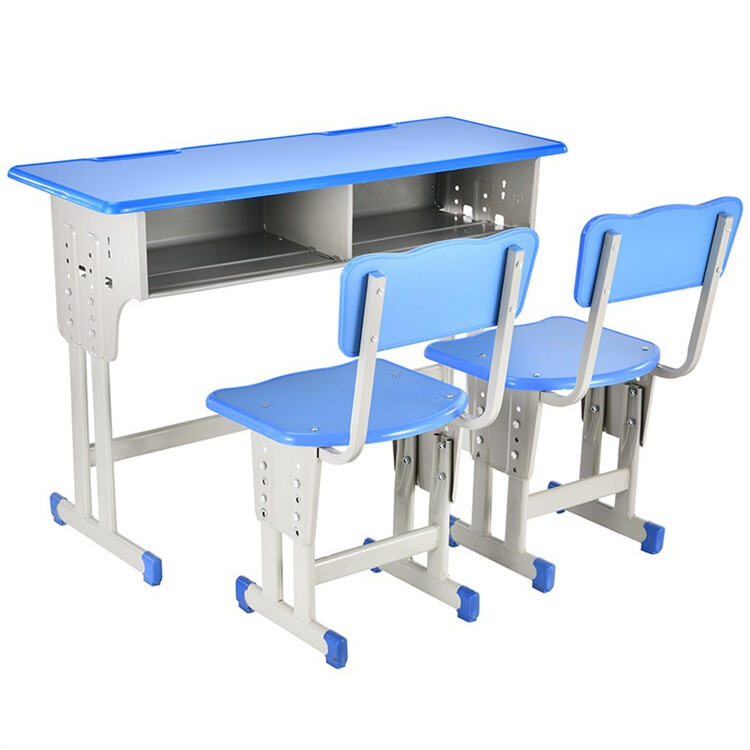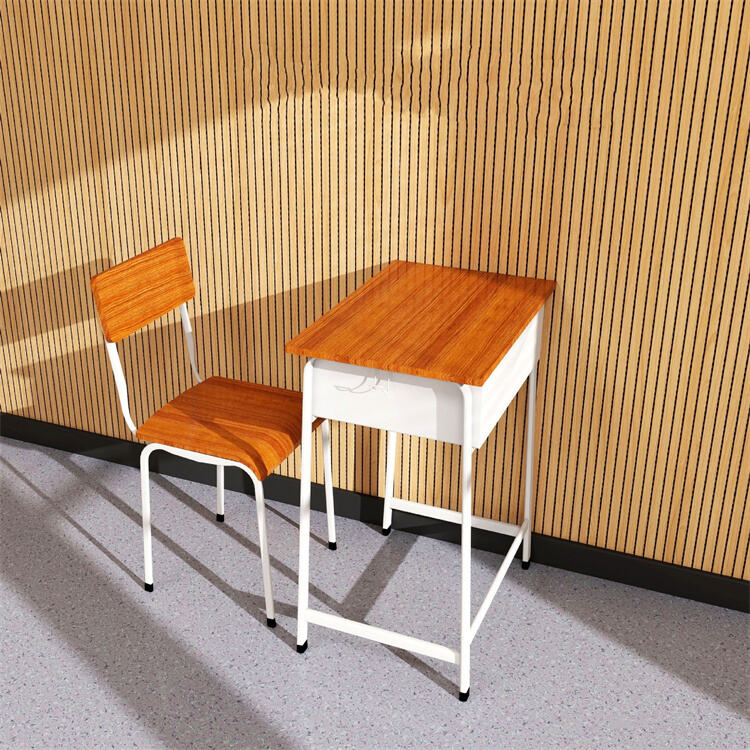Creating the Optimal Learning Environment Through Furniture Selection
The right school desk and chair combination forms the foundation of a student's learning environment. When students spend hours each day seated at their desks, the importance of selecting appropriate furniture cannot be overstated. Quality classroom furniture directly impacts posture, comfort, focus, and ultimately academic performance. This comprehensive guide will help you understand how to select the ideal school desk and chair setup that promotes both comfort and productivity.
Essential Features of Ergonomic School Furniture
Proper Desk Height and Surface Area
The ideal school desk should be proportionate to a student's height and age group. The work surface should sit approximately 1-2 inches above elbow height when seated, allowing arms to rest naturally while writing or using devices. A desk surface area of at least 24 x 36 inches provides adequate space for books, notebooks, and technology tools without feeling cramped.
Consider adjustable-height desks that can accommodate students of varying sizes and grow with them throughout the academic year. The desk surface should feature a slight tilt option of 10-15 degrees to reduce neck strain when reading and writing. Non-reflective materials prevent glare that can cause eye fatigue during long study sessions.
Chair Design and Support Features
An ergonomic school chair should provide proper lumbar support and promote good posture. The seat height should allow feet to rest flat on the floor with knees bent at approximately 90 degrees. A contoured seat pan with waterfall edge design reduces pressure on the back of thighs and promotes healthy circulation.
Look for chairs with breathable materials and proper cushioning that maintains its shape over time. The backrest should feature a slight recline angle between 95-105 degrees for optimal spine alignment. Mobility is also crucial - choose chairs with smooth-rolling casters for easy movement, but ensure they lock securely when stationed.
Material Selection and Durability Considerations
High-Quality Surface Materials
The desk surface material significantly impacts both functionality and longevity. High-pressure laminate offers excellent scratch and stain resistance while remaining cost-effective. Premium options include phenolic resin tops, which provide superior durability and chemical resistance, ideal for science classrooms.
Edge banding should be securely attached and feature rounded corners for safety. Consider antimicrobial surface treatments that reduce the spread of germs in shared classroom environments. The desk finish should be easy to clean and maintain while withstanding daily use.
Frame Construction and Stability
A robust frame construction ensures stability and longevity of both desk and chair. Powder-coated steel frames offer superior durability and rust resistance compared to painted surfaces. Look for welded joints rather than bolt-together construction for maximum stability and reduced maintenance needs.
Chair bases should feature a five-point design for optimal stability and weight distribution. The frame materials should be tested for weight capacity appropriate to the age group, typically ranging from 250-300 pounds for standard classroom furniture.

Space Optimization and Flexibility
Storage Solutions and Organization
Modern school desk and chair combinations should incorporate smart storage solutions. Built-in book boxes or under-desk storage compartments help keep learning materials organized and readily accessible. Consider desks with integrated wire management systems for technology integration.
Modular furniture designs allow for various classroom configurations, promoting both individual and collaborative learning environments. Look for desks that can be easily grouped together for project work while maintaining individual workspace integrity.
Mobility and Space Efficiency
The ability to reconfigure classroom layouts quickly is essential in modern educational environments. Choose furniture that's lightweight yet sturdy, with options for nesting or stacking when not in use. Chairs should slide smoothly under desks to maximize walkway space and maintain organized appearances.
Consider combination desk-chair units for smaller classrooms where space optimization is crucial. These integrated designs can offer significant space savings while maintaining ergonomic benefits for students.
Safety Standards and Compliance
Regulatory Requirements
All school furniture must meet specific safety standards and certifications. Look for products that comply with BIFMA (Business and Institutional Furniture Manufacturer's Association) standards for stability, durability, and safety. Ensure furniture meets local education department requirements and fire safety codes.
Check for proper certification labels and documentation, including weight capacity ratings and stability test results. Consider furniture with GreenGuard certification for low chemical emissions, contributing to better indoor air quality.
Maintenance and Longevity
Select school desk and chair combinations that offer warranty coverage and readily available replacement parts. Regular maintenance schedules should be easy to implement, with clear guidelines for cleaning and repair procedures.
Consider the total cost of ownership, including maintenance requirements and expected lifespan. Quality furniture may command a higher initial investment but often proves more economical over time through reduced replacement and repair needs.
Frequently Asked Questions
What is the ideal desk height for different age groups?
Elementary school students typically need desks 22-25 inches high, middle school students 24-28 inches, and high school students 28-30 inches. However, adjustable-height options are recommended to accommodate individual needs and growth patterns.
How often should school furniture be replaced?
Quality school desk and chair combinations should last 10-15 years with proper maintenance. However, regular assessments should be conducted to ensure structural integrity and ergonomic support remain adequate. Replace items showing significant wear or damage that could compromise student safety or comfort.
What features should be prioritized when choosing classroom furniture?
Focus on ergonomic design, durability, adjustability, and proper size for the age group. Additional considerations include storage solutions, mobility features, and compliance with safety standards. The furniture should support both individual and collaborative learning while maintaining student comfort throughout the school day.


